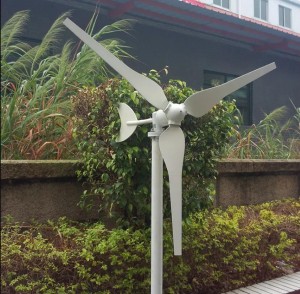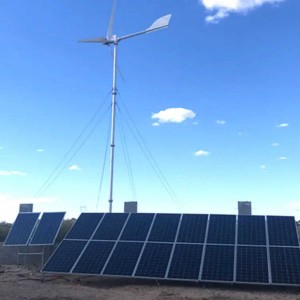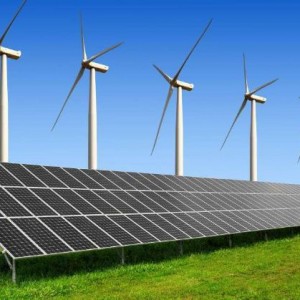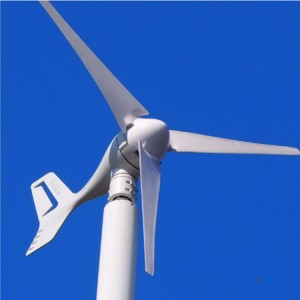wind turbine water heating system
Wind turbine generators are used primarily for electricity generation. The power used can be stored in a battery bank or connected to the mains supply using a suitable grid tie inverter.
Now, we design a special controller for heating water directly.
The controller should be powered by two PCS 12V/7ah batteries. The controller will charge the batteries automatically when the wind turbine spins.If local has grid power, can use grid power instead of battery supply power to controller.
The output voltage range of controller is made to be 110~240VDC.
Before 110VDC, the controller is disconnected with water heating resistors by the controller.
The wind turbine is spinning without loads, so the voltage goes up quickly.
Within 110~240V, the output voltage of controller is connected with water heating resistor automatically. The water heating resistor starts to heat the water. Our heating controller could increase the power flow to the heating element when the rotation speed of the wind turbine increases.
When the output voltage of controller is more than 240VDC, the dump load will consume the excess output power of wind turbine to protect the heating element against overvoltage.
1kw wind turbine water heating system
2kw wind turbine water heating system
2.5kw wind turbine water heating system
3kw wind turbine water heating system
5kw wind turbine water heating system
10kw wind turbine water heating system
To guarantee a reliable supply of wind-generated electricity for an off-the-grid system, you need a much bigger turbine than would be necessary to produce the appropriate number of kilowatt-hours for a grid-connected home. The bigger turbine eases the load on the batteries by generating current even in light winds. In moderate or strong winds the turbine produces more power than needed. The surplus can then be used for heating, thus saving fuel.
Dumping or diverting excess wind power to heating has become a common practice in stand-alone wind systems. For those off the grid, the situation in Alberta, Canada, is little different from Scotland’s.
The turbine’s electrical control system must be adapted to direct excess power to your dump or diversion load to ensure that this load is compatible with the wind turbine. You don’t want to stall the rotor, when the dump load switches on, by placing too great a load on the rotor. Modern solid-state electronics are well suited for this function.










